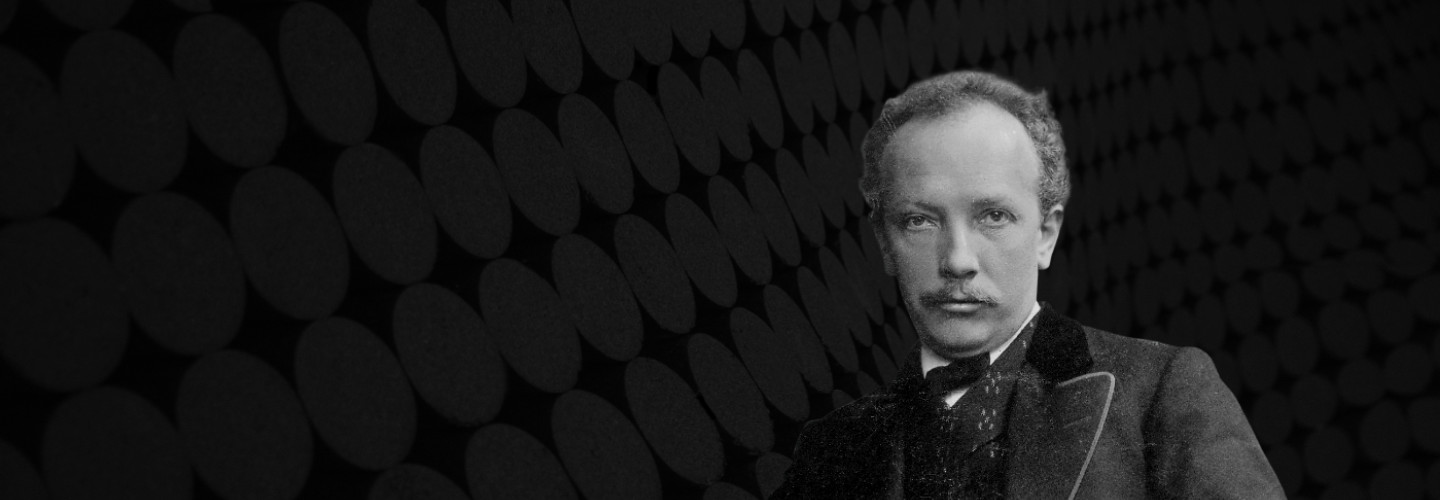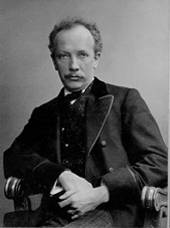

Richard Strauss
Zueignung (Devotion)
Short instrumentation: 2 2 2 3 - 4 3 0 0 - timp, hp(2), str
Duration: 2'
Übersetzer: John Bernhoff
Text von: Hermann von Gilm
Dedication: für Viorica [Ursuleac]
Solos:
high voice
Instrumentation details:
1st flute
2nd flute
1st oboe in
2nd oboe
1st clarinet in C (or Bb)
2nd clarinet in C (or Bb)
1st bassoon
2nd bassoon
3rd bassoon
1st horn in F
2nd horn in F
3rd horn in C (or F)
4th horn in C (or F)
1st trumpet in C
2nd trumpet in C
3rd trumpet in C
timpani
1st harp
2nd harp
violin I
violin II
viola
violoncello
double bass
Strauss - Zueignung for high voice and orchestra
Printed/Digital
Translation, reprints and more

Richard Strauss
ZueignungOrchestration: für hohe Stimme und Orchester
Type: Dirigierpartitur
Language: Deutsch | Englisch
Sample pages
Audio preview
Work introduction
In 1885 Strauss composed his first collection of lieder based on poems of the Austrian Hermann von Gilm and provided them with opus number 10. Although he had already overcome the eclectic early period, his significant tonal language is, however, nevertheless not developed completely at that time. Dedication – (this title was, by the way, given to the lied by himself) has maybe become the most famous one of the lieder of this creative period. Because of its solemn affection and its emphatic finale it is also often called the “lied hymn” and preferentially put at the end of Strauss recitals. The composer himself performed the work as a piano accompanist twice on the Austrian “broadcasting station of the German Reich” and has thereby rather emphasized its solemn and dignified character. In 1940 he made an instrumentation, probably in order to counter the orchestra version of Robert Heger which he did not hold in high esteem with a version of his own. The direct comparison of these two arrangements shows some interesting differences: for instance, Strauss does without the one in the bass in the first measures of the piano version and lets the upper part (violins) set in alone in a syncopated way which entails another shifting of weight within the measure, and gives something like a “gentle swing” to the prelude. There are also several other modifications, both in the orchestral structure and in the vocal part. The most striking alteration can certainly be found at the end of the lied, where the singing soars up to the “heilig, heilig”, and where the four-quarter time is extended to a three-two time. (It can be heard also on the piano recordings mentioned above that Strauss allowed the singers more time for the crowning high “a”.) As an additional recast the last verse is prolonged by the words “you wonderful Helena“ – an expression of thanks to Viorica Ursuleac, the wife of Clemens Krauss, who had sung the title part at the first night of his “Egyptian Helena” at the Salzburg Festival in 1933.
(c) Nightingale Classics; Nicole Rainer, Translation by Sabine Zechmeister
